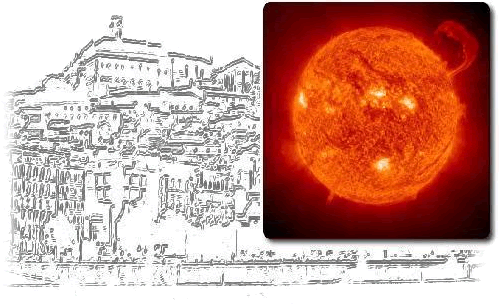|
|
|
|
|
|
|
|
|
|
|
|
|
Shi Tsan Wu, Mr. - PhD |
|
Center for Space Plasma and Aeronomic Research & Department of Mechanical and Aerospace Engineering, The University of Alabama in Huntsville, Huntsville, AL 35899, USA |
|
|
|
|
|
|
|
Session 3 - Speaker |
|
What Additional Measurements Are Needed for the Magnetohydrodynamic (MHD) Simulation of Solar Atmospheric Dynamics? |
|
S. T. Wu (1) and N. Gopalswamy (2), 1 - Center for Space Plasma and Aeronomic Research & Department of Mechanical and Aerospace Engineering, The University of Alabama in Huntsville,
Huntsville, AL 35899 USA, 2 - NASA/Goddard Space Flight Center, Greenbelt, MD 20771 USA |
|
|
|
It has been well recognized from observation that the active-region magnetic
field evolution is closely related to solar eruptive features such as flares and coronal
mass ejections (CMEs). Magnetohydrodynamic (MHD) simulation has become a necessary tool
for interpretation and revelation of the new physics of these observations to enhance our
understanding and knowledge in the area of solar eruptive features. Therefore, assurance
of a realistic MHD simulation is a necessary first step, specifically; the observed physical
parameters must be used as constraints for the MHD simulation. Theoretically, MHD simulation
is an initial boundary value problem as the solar atmospheric dynamic flows spread from the
subsonic/Sub- Alfvénic to supersonic/super-Alfvénic flow region. Hence, specific rules
prescribe the self-consistent boundary conditions which are needed, thus, the method of
characteristics is the rule to assure the self-consistency. There are eight physical
quantities for the MHD simulation which are the three components of the magnetic and
velocity field plus thermodynamic properties (i.e. density and temperature).
Presently, the routine measurements are made up from three components of the photospheric
magnetic field, but according to the method of characteristic theory, we need to specify
five specified quantities on the boundary for the MHD simulation to assure the self-consistency
of the simulation. In this presentation, a brief description of the method of characteristics
will be given. Then, two numerical examples will also be given to illustrate the importance
of additional measurements. This will show that that the simulation results more closely
resemble the observation if five quantities are specified on the boundary. We suggest
two more measurements are needed for better and more reliable MHD simulation. These two
quantities can be chosen from those five un-measured physical quantities which are either
velocity field or thermodynamic properties. |
|
|
|
|
|
|
|




 









 |



